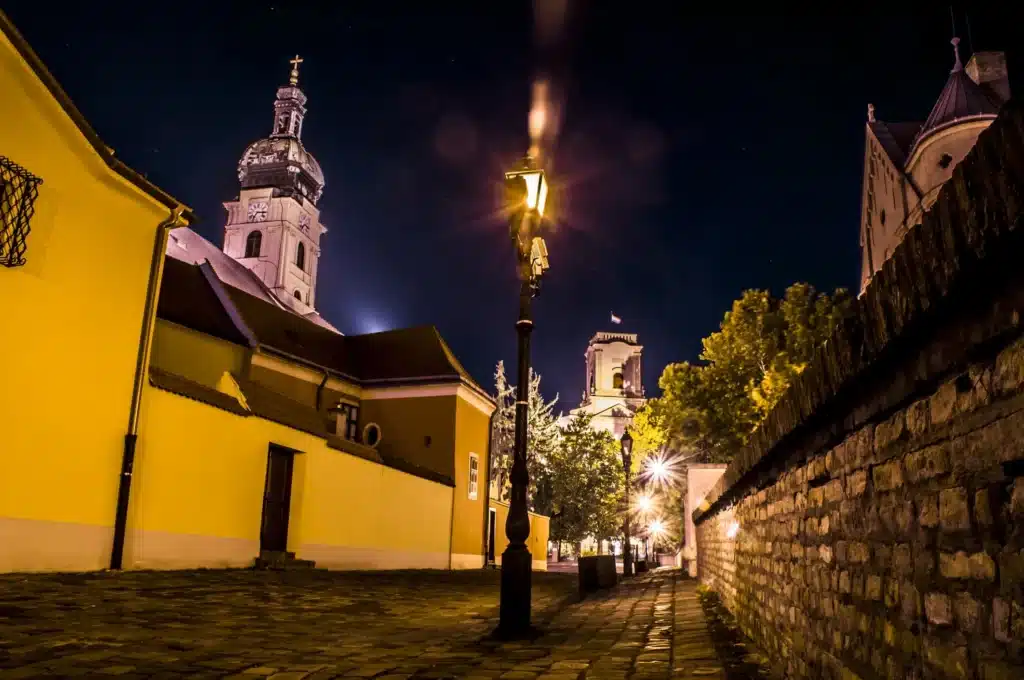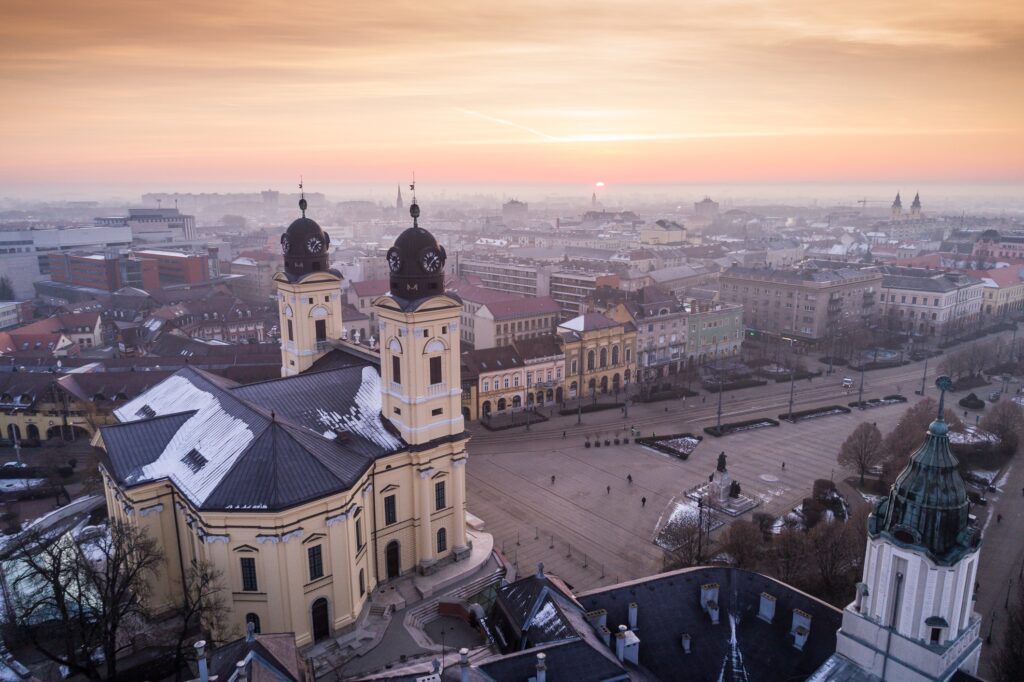A következő cikkben Szentendrére látogatunk, és nézzük meg angolul, hogy mit érdemes meglátogatni vagy ajánlani külföldieknek.
Szentendre is located just outside Budapest, and with its Danube setting, it is a popular destination for tourists looking to escape the city and see a bit more of Hungary.
The lovely town is symbolized by churches, museums, galleries and cafés in Baroque setting. Serbians fleeing from the Turkish occupation settled here in the 17th century in large numbers, giving the city its Mediterranean character. The architecture, cobblestone streets and the city’s picturesque location have attracted many artists throughout the years. Let’s see what to do and see when you visit this charming town.
Open-Air Ethnographic Museum (Skanzen)
This open-air museum is perfect for those who wish to learn about and explore the history of the Hungarian way of life. It displays traditional Hungarian rural architecture from different regions of the country, such as recreated peasant homes from the 18-20th centuries, stone windmills.

The Museum is also home to a collection of artefacts that aim to educate visitors about the life and traditions of different Hungarian regions. Visitors get a chance to learn about the seven Hungarian regions from the Great Plains to Balaton Uplands. With petting farms, craft stalls and several events (including the mangles pig festival), this is a brilliant summer or family day out.
Marzipan Museum
The Szamos Marzipan Museum is one of Szentendre’s most visited attractions. The museum is dedicated to the life and work of two outstanding Hungarian confectioners: Mátyás Szamos and Károly Szabó. The exhibition displays the art of marzipan making along with some of their masterpieces, such as a marzipan version of the Parliament building. The lower floor is also home to a shop where guests can buy marzipan in many shapes and colours.
Margit Kovács Collection

source: Facebook
The Margit Kovács Museum is one of Szentendre’s best known attractions, dedicated to the work of artist Margit Kovács (1902-1977), a famous ceramic sculptor, well-known throughout Hungary. Kovács’ works are a tribute to her Hungarian roots, and her main themes were folk art and religious art, especially Bible stories. She donated the majority of her work, such as statues, pots, plates and plaques, to Szentendre. Unfortunately, visitors are not allowed to take any photographs, but the distinctive style is memorable enough.
Ferenczy Museum

source: Facebook
Károly Ferenczy (1862-1917) was a Hungarian Impressionist, one of the leading painters of the famous Nagybánya School of Painting. He studied in Paris, and lived in Szentendre, Munich and Nagybánya. In 1906, he moved to Budapest and became the professor of the College of Fine Arts. His children, Valér Ferenczy (1885-1954), painter, Noémi Ferenczy (1890-1957), tapestry weaver, and Béni Ferenczy (1890-1967), sculptor, were famous representatives of Hungarian art. The museum is a tribute to the Ferenczy family.
Béla Czóbel Museum
Béla Czóbel (1885-1976) lived in Paris and Szentendre alternately from the 1940s. He belonged to the group of painters following the Post-Impressionist movement. Also his style reflects the principles of the Nagybánya School of Painting.






